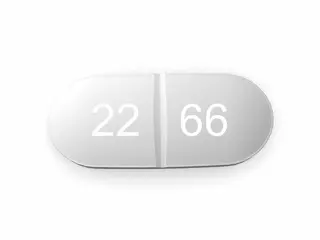Muscle Relaxant
Effective muscle relaxants to relieve tension, reduce muscle spasms, and promote relaxation. Shop now for fast-acting formulas designed to support pain relief and improve mobility.
Muscle relaxants are medications designed to relieve muscle spasms, stiffness, and pain. They work by acting on the central nervous system or directly on skeletal muscles. These drugs are commonly prescribed for conditions such as back pain, neck pain, multiple sclerosis, and spasticity after spinal cord injuries. Among the many options available, Baclofen, Robaxin, and Zanaflex are some of the most popular and widely used muscle relaxants.
Baclofen is often prescribed for muscle spasticity related to multiple sclerosis and spinal cord injuries. It works by mimicking the action of GABA, a neurotransmitter that inhibits nerve signals in the brain and spinal cord. This results in the reduction of muscle stiffness and spasms. Baclofen is typically taken orally but also comes in an intrathecal form for severe cases. Patients usually report improvement in muscle control and reduction in pain after a few days of starting treatment. Common side effects include drowsiness, dizziness, and weakness. Baclofen requires careful dosage adjustments to avoid withdrawal symptoms, which can be severe if the drug is stopped abruptly.
Robaxin, or methocarbamol, is another widely used muscle relaxant. It is mainly used for acute muscle spasms caused by injuries, strains, or surgery. Robaxin works by depressing the central nervous system. It does not act directly on muscles but reduces the sensation of pain by relaxing the muscles indirectly. Robaxin is generally well tolerated. The most frequent side effects include dizziness, drowsiness, and stomach upset. Because it can cause sedation, it is advised to avoid alcohol and activities requiring alertness while taking this medication. Robaxin is fast-acting and usually starts to work within 30 minutes after oral intake.
Zanaflex, known by its generic name tizanidine, is another effective muscle relaxant. It is prescribed to manage muscle spasticity caused by conditions such as multiple sclerosis, spinal cord injury, or stroke. Zanaflex works by blocking nerve impulses and reducing the release of excitatory neurotransmitters that cause muscle tightness. This medication has a short half-life, so it is often taken multiple times a day. Users of Zanaflex often notice relief from muscle stiffness and pain, along with improved mobility. However, it can cause side effects like dry mouth, drowsiness, and low blood pressure. Starting with a low dose and gradually increasing it can help minimize these adverse effects.
All three medications—Baclofen, Robaxin, and Zanaflex—have proven their effectiveness in relaxing muscles and alleviating pain. But they work differently and are suited for different types of muscle problems. Baclofen is ideal for chronic spasticity, while Robaxin is better for short-term relief of muscle spasms after injury. Zanaflex is useful for both acute and chronic muscle issues but has a shorter duration of action that requires multiple doses per day.
Choosing the right muscle relaxant depends on the specific condition being treated, patient health status, and tolerance to side effects. Doctors often start with the lowest effective dose and adjust based on response. Combining muscle relaxants with physical therapy and other pain management strategies can provide the best results.
When using muscle relaxants, caution is essential. These drugs can cause drowsiness, dizziness, and impaired coordination, increasing the risk of falls and accidents. Driving and operating heavy machinery should be avoided until the patient knows how the medication affects them. Alcohol consumption can worsen these side effects and should be limited or avoided.
Muscle relaxants can also interact with other medications, such as sedatives, antidepressants, and painkillers. It is important to inform the prescribing physician of all current medicines to prevent harmful interactions. Regular medical follow-up is necessary to monitor effectiveness and side effects. In some cases, long-term use can lead to dependence or tolerance, requiring medical supervision.
Another important consideration is the potential withdrawal symptoms from Baclofen or Zanaflex if stopped suddenly. These symptoms can include hallucinations, seizures, and increased muscle spasms. Therefore, any discontinuation should be done gradually and under medical guidance.
In summary, muscle relaxants like Baclofen, Robaxin, and Zanaflex play a vital role in managing muscle-related conditions. They offer effective relief from pain and stiffness, improving patient quality of life. However, their use must be carefully managed to avoid side effects and complications. Always consult a healthcare professional before starting or stopping treatment with these medications.


